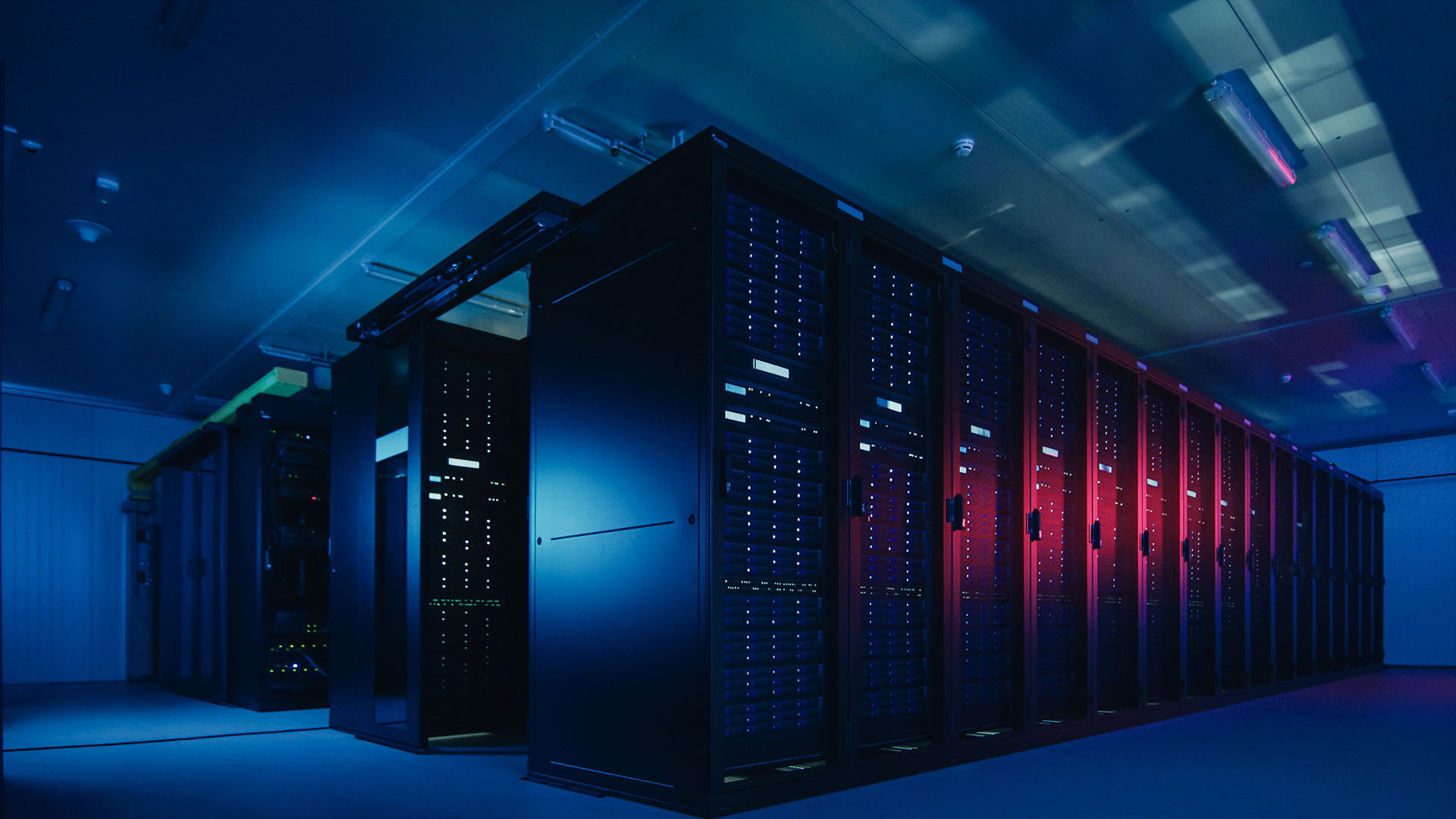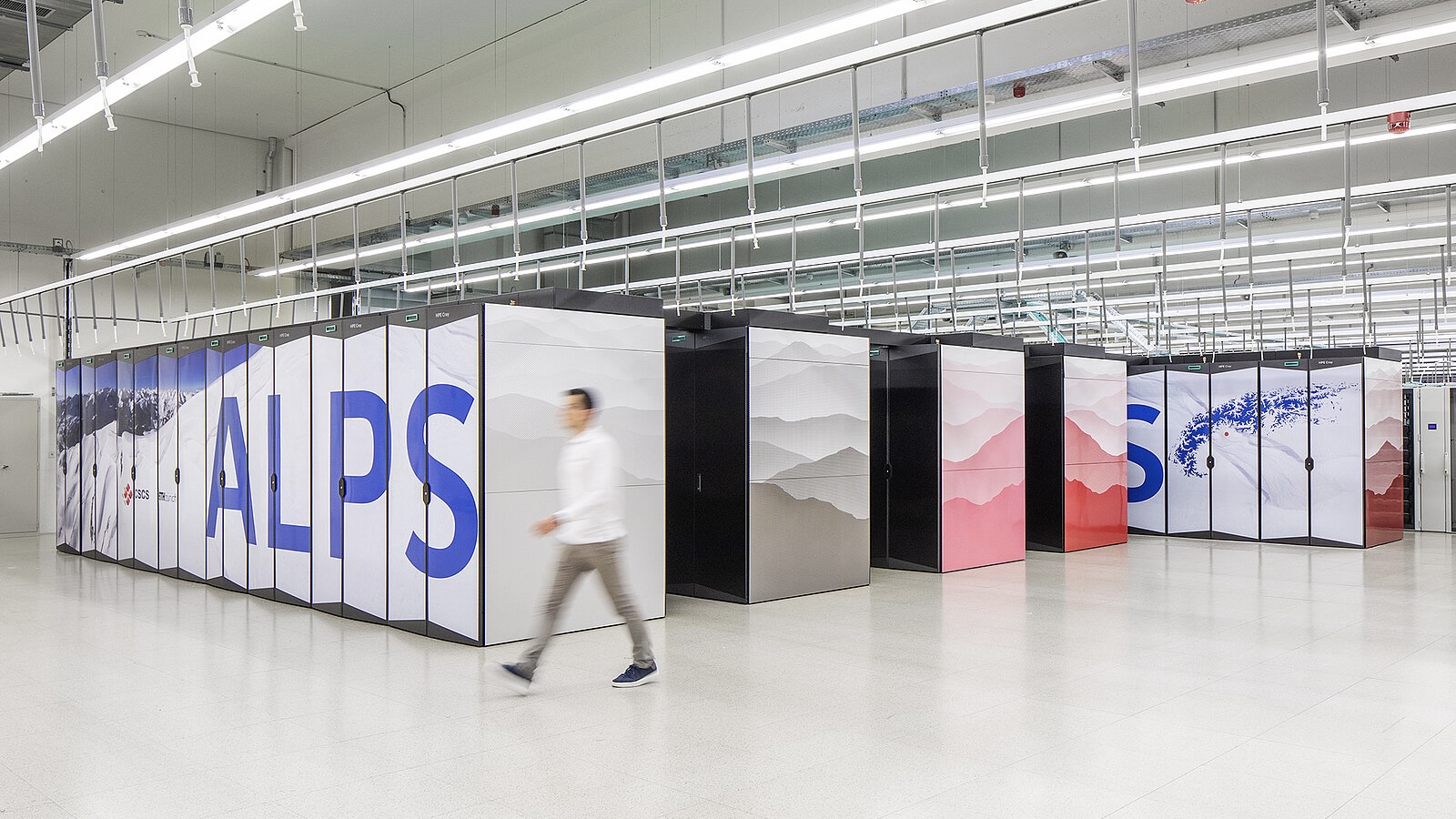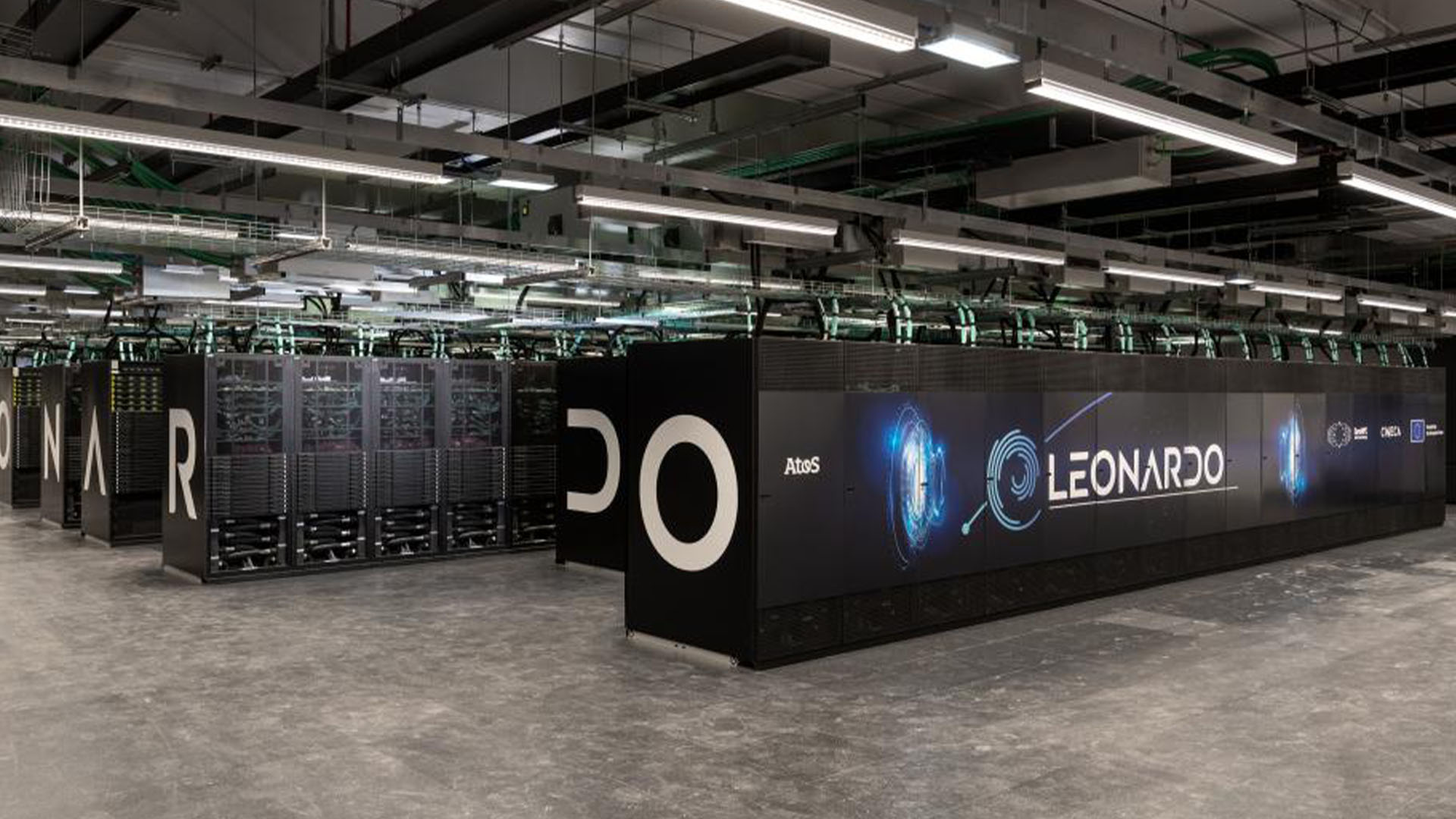The 9 most powerful supercomputers in the world right now
Supercomputers play a vital role in scientific discoveries — from helping us forecast climate change to discovering new drugs. We've rounded up the top fastest on the planet right now.

Supercomputers work based on the same principles as everyday computers, but their performance levels are much higher and they look more like the classic mainframes of old. Unlike normal desktop PCs or laptops, they process massive data sets and perform calculations at incredible speeds. They're the fastest computers in the world, according to IBM, and require a massive amount of infrastructure to operate — including advanced cooling systems.
Architecturally, they are also fitted with many more components than normal PCs. Your laptop might have one central processing unit (CPU) and one graphics processing unit (GPU), but one supercomputer may have thousands upon thousands of CPUs and GPUs — each of them considerably more powerful than those you find off the shelf.
Their performance is also measured using floating-point operations per second (FLOPS) — where one floating-point operation is a mathematical calculation. The most powerful supercomputer in the world now exceeds 1 exaFLOP — 1 quintillion (1018) FLOPS — while normal PCs and laptops usually have power of several hundred gigaFLOPS — 1 trillion (109) FLOPS. We refer to machines like this as exascale supercomputers.
Because they can work with massive amounts of data and process calculations incredibly fast, scientists often use supercomputers to crack problems in drug and material discovery. Supercomputers can also make predictions — like forecasting the weather — and even learn how to play chess, like IBM's classic Deep Blue supercomputer in 1997.
Based on the latest TOP500 rankings, here are the seven most powerful supercomputers online today.
1. El Capitan
- Location: Lawrence Livermore National Laboratory — California, U.S.
- Performance: 1,742 petaFLOPS (1.742 exaFLOPS)
- Components: AMD 4th-Gen EPYC 24-core CPUs in AMD Instinct MI300A APUs
- First online: November 2024
El Capitan is now the world's most powerful supercomputer — and the planet's third-ever exascale machine — after coming online at the end of 2024.
Get the world’s most fascinating discoveries delivered straight to your inbox.
Located at the Lawrence Livermore National Laboratory, this supercomputer will perform tasks aimed at safeguarding and securing the U.S. stockpile of nuclear weapons in the absence of underground testing. It is also used for classified tasks relating to national security, including how artificial intelligence (AI) and machine learning can be used for that task. It will also be solving problems in materials science and physics.
The supercomputer was originally commissioned by the U.S. Department of Energy as a replacement for the Sierra machine built in 2018, as part of the CORAL-2 program. It also has a peak performance
2. Frontier
- Location: Oak Ridge National Laboratory — Tennessee, U.S.
- Performance: 1,353 petaFLOPS (1.4 exaFLOPS)
- Components: AMD EPYC 64-core CPUs and AMD Instinct MI250X GPUs
- First online: August 2022
Now second in the list, Frontier — built by supercomputing giant HPE Cray — became the first exascale computer in the world when it went online in 2022. Scientists initially planned to use Frontier for cancer research, drug discovery, nuclear fusion, exotic materials, designing superefficient engines and modeling stellar explosions, according to IEEE Spectrum.
In the coming years, scientists will use Frontier to design new transport and medicine technologies, reported MIT Technology Review. Evan Schneider, assistant professor in computational astrophysics at the University of Pittsburgh, told MIT Tech Review that he wants to run simulations of how the Milky Way has evolved over time.
3. Aurora
- Location: Argonne National Laboratory — Illinois, U.S.
- Performance: 1,012 petaFLOPS (1.0 exaFLOPS)
- Components: Intel Xeon Max Series CPUs and Intel Data Center Max Series GPUs
- First online: June 2023
One of the youngest supercomputers on the list may also one day become the most powerful. Based at the Argonne Leadership Computing Facility (ALCF), Aurora became the second exascale supercomputer ever, and ALCF representatives said it has the potential to reach 2 exaFLOPS of computing power — which is double Frontier's.
Built in partnership with Intel and HPE, Aurora integrates scientific tools and analysis, performs modeling and simulation and runs artificial intelligence (AI). Aurora's firepower allows it to create accurate models in various domains including climate projection, material science, energy storage and nuclear fusion. Fusion, in particular, is a focus for Aurora, according to HPCWire, and it may one day help to unlock the secret to large-scale fusion energy.
4. Eagle
- Location: Microsoft Azure — The Cloud / Distributed
- Performance: 561 petaFLOPS (0.56 exaFLOPS)
- Components: Intel Xeon Platinum 8480C 48C CPUs and Nvidia H100 GPUs
- First online: August 2023
Microsoft's Eagle supercomputer is isn't based in a laboratory — it is based in the cloud, and anybody can access it through the Microsoft Azure cloud platform. It's a distributed network of systems that collectively boast enough power to be the third fastest supercomputer in the world. Eagle can in theory be accessed by anybody willing to pay a fee.
5. HPC6
- Location: Green Data Center Eni — Ferrera Erbognone, Italy
- Performance: 477.9 petaFLOPS
- Components: AMD 3rd-Gen EPYC 64-core CPUs in AMD Instinct MI250X GPUs
- First online: November 2024
Italian energy company Eni launched the most powerful supercomputer in Europe in November 2024. The supercomputer, dubbed "HPC6", is also the world's first industrial-use supercomputer and the first non-U.S-based system in the top five. Improvements made to the infrastructure at the Green Data Center Eni have increased performance levels nearly 10-fold, from 70 petaFLOPS to a peak of 606 petaFLOPS. HPC6 is designed to support research into decarbonization efforts and energy efficiency.
The supercomputer will research geological and fluid dynamics for carbon dioxide storage, as well as developing high-performance batteries, optimize the biofuel supply chain, develop materials for applications in the biochemistry sectors and simulate plasma behavior in magnetic confinement fusion. Eni representatives also say that HPC6 has a new liquid cooling system using a "direct" approach that dissipates 96% of heat generated.
6. Fugaku
- Location: Riken Center for Computational Science — Kobe, Japan
- Performance: 442 petaFLOPS (0.44 exaFLOPS)
- Components: A64FX CPUs
- First online: June 2020
Once the most powerful supercomputer in the world — between June 2020 and June 2022 — Fugaku is one of the oldest top-five systems on this list. It receives its name from Mount Fuji, an active volcano approximately 60 miles (100 kilometers) from Tokyo, and displaced the Summit supercomputer (No. 7 on the list) when it first reached the top of the TOP500 list.
Scientists have used Fugaku for several crucial research questions through the years. During the COVID-19 pandemic, researchers used its number-crunching abilities to confirm that face masks made with non-woven fabric were more effective at blocking airborne respiratory droplets, according to Nikkei Asia. Fugaku is currently training Japanese AI large language models, in the mold of ChatGPT, Japan News reported.
7. Alps

- Location: Swiss National Supercomputing Centre — Lugano, Switzerland
- Performance: 270 petaFLOPS
- Components: Nvidia GH200 Grace Hopper processors
- First online: September 2024
Inaugurated in September 2024, the Alps supercomputer is dedicated to processing the huge amounts of data required in modern science and was built to replace the Swiss National Supercomputing Centre's (CSCS) previous Piz Daint supercomputer. The machine is open for use by researchers all over the world.
The computer's infrastructure allows portions of its processing power to be set aside for specific purposes. For example, one "versatile cluster" will be dedicated to MeteoSwiss — Switzerland's federal office for meteorology and climatology. Another will be dedicated to machine learning and AI workloads. Although its heart is at CSCS, the supercomputer is also distributed across other sites including the Swiss Federal Technology Institute of Lausanne, the Paul Scherrer Institute (PSI) in Villingen and the European Centre for Medium-Range Weather Forecasts (ECMWF) data center in Bologna, Italy.
8. LUMI
- Location: CSC Data Center — Kajaani, Finland
- Performance: 380 petaFLOPS (0.38 exaFLOPS)
- Components: AMD 3rd-Gen EPYC 64-core CPUs and AMD Instinct MI250X GPUs
- First online: June 2021
LUMI, based in Finland, was once Europe's most powerful supercomputer and is now the eighth-fastest in the world. It uses 100% renewable hydroelectric energy, according to European Union (EU) officials, and its waste heat is used to warm nearby buildings. It began running pilot operations three years ago and became fully operational in February 2023.
Designated as a supercomputer that researchers from across Europe can use for collaborative research, this system is optimized for AI-based workloads, officials have previously said. LUMI is also used as a "partner" for quantum computers, namely two systems called QAL 9000 and Helmi — both based in Finland. This quantum-classical computing partnership aims to give researchers the best of current quantum computers (which are severely limited based on their potential in the future) and supercomputers.
9. Leonardo
- Location: CINECA data center — Bologna, Italy
- Performance: 239 petaFLOPS (0.23 exaFLOPS)
- Components: Intel Xeon Platinum 8358 32-core CPUs and Nvidia A100 GPUs
- First online: November 2022
Another system that's part of the EU's EuroHPC supercomputing program, Leonardo comprises three modules that combine to make it Europe's second-fastest machine. The organization that hosts it, CINECA, is a consortium of Italian universities, public research centers and government agencies.
The supercomputer entered its pre-production phase in May 2023, during which time 80 projects were submitted and 13 chosen. Then, in August, the supercomputer entered its production phase.

Keumars is the technology editor at Live Science. He has written for a variety of publications including ITPro, The Week Digital, ComputerActive, The Independent, The Observer, Metro and TechRadar Pro. He has worked as a technology journalist for more than five years, having previously held the role of features editor with ITPro. He is an NCTJ-qualified journalist and has a degree in biomedical sciences from Queen Mary, University of London. He's also registered as a foundational chartered manager with the Chartered Management Institute (CMI), having qualified as a Level 3 Team leader with distinction in 2023.









